Best Bike Pumps Reviewed: Mini, Floor, and CO2 Options for Optimal Tire Pressure

A high-quality bike pump is one of the most important accessories a cyclist can own.
No matter what type of cycling you do, keeping your tires inflated to the recommended tire pressure is a crucial factor in achieving comfort, safety, and speed.
While all pumps do the same thing, there’s a huge selection to choose from, each with slightly different specs and features; therefore, choosing the best bike pump for your needs can prove to be tricky.
Should you get a mini pump or a floor pump? How about a high-volume or high-pressure pump? Or maybe an electric pump would be best? Then again, what the hell is a shock pump?
In this article, we’ll show you the best bike pumps in each category, and explain all the nuances and features to help you make the best choice for yourself!
How Did We Choose?
The bike pumps listed below are chosen based on our real-life experience and the online rating and feedback from cyclists like you who have bought and used them.
We’ve carefully analyzed customer reviews and expert opinions to ensure these selections meet a wide range of needs and preferences.
Additionally, we’ve considered factors like durability, ease of use, and versatility in different situations, from quick roadside flat tire fixes to regular home tire pressure maintenance.
Our goal was to pick the best-selling models that have proved to offer good value for the money and get the job done for a variety of riders, including recreational cyclists and more dedicated enthusiasts.
This comprehensive approach ensures that whether you’re a casual rider or a serious cyclist, you’ll find a pump that suits your requirements.
Best Bike Floor Pumps
A high-quality bike floor pump is generally a cornerstone of every cyclist’s equipment.
Below you’ll find a nice selection of bike pumps, including high-pressure and high-volume types, suitable for different applications.
1. Topeak JoeBlow Sport III
Best Bang for the Buck

MSRP: $59.95
- Max Pressure: 160 PSI
- Valve Type(s): Presta, Schrader, Dunlop
The Topeak JoeBlow Sport III is an affordable and straightforward bike floor pump that gets the job done with minimal fuss. Plus, it’s colored bright yellow, which means you can easily find it when you’re in a rush, even if your garage is messy.
The twin pump head fits Presta, Schrader, and even Dunlop valves, so you can use it on all of your bikes. On top of that, the max PSI you can achieve is 160, which is more than enough even for slim road tires.
Finally, the Topeak JoeBlox Sport III should last you for a long time as the barrel and base are made from steel, which makes it extremely durable.
2. Bontrager Charger
Best Pump with Auto-Select Head

MSRP: $45
- Max Pressure: 160 PSI
- Valve Type(s): Presta, Schrader
The Bontrager Charger bike pump holds an unbeatable value at the lower price range.
You’ll get a pump with a comfortable anti-slip handle and footpads, durable steel construction, and replaceable internals for under $50.
The main reason we chose to include this pump is its auto-select head that instantly fits both Presta and Schrader valves, which is great when you’re in a rush because you’re late for your weekend group ride.
The maximum tire pressure you can achieve is 160 psi (though you won’t need to go that high on any bike) and the 3-inch gauge is easy to read for anyone.
3. Specialized Air Tool Sport Switchhitter II
Best with a Long Hose
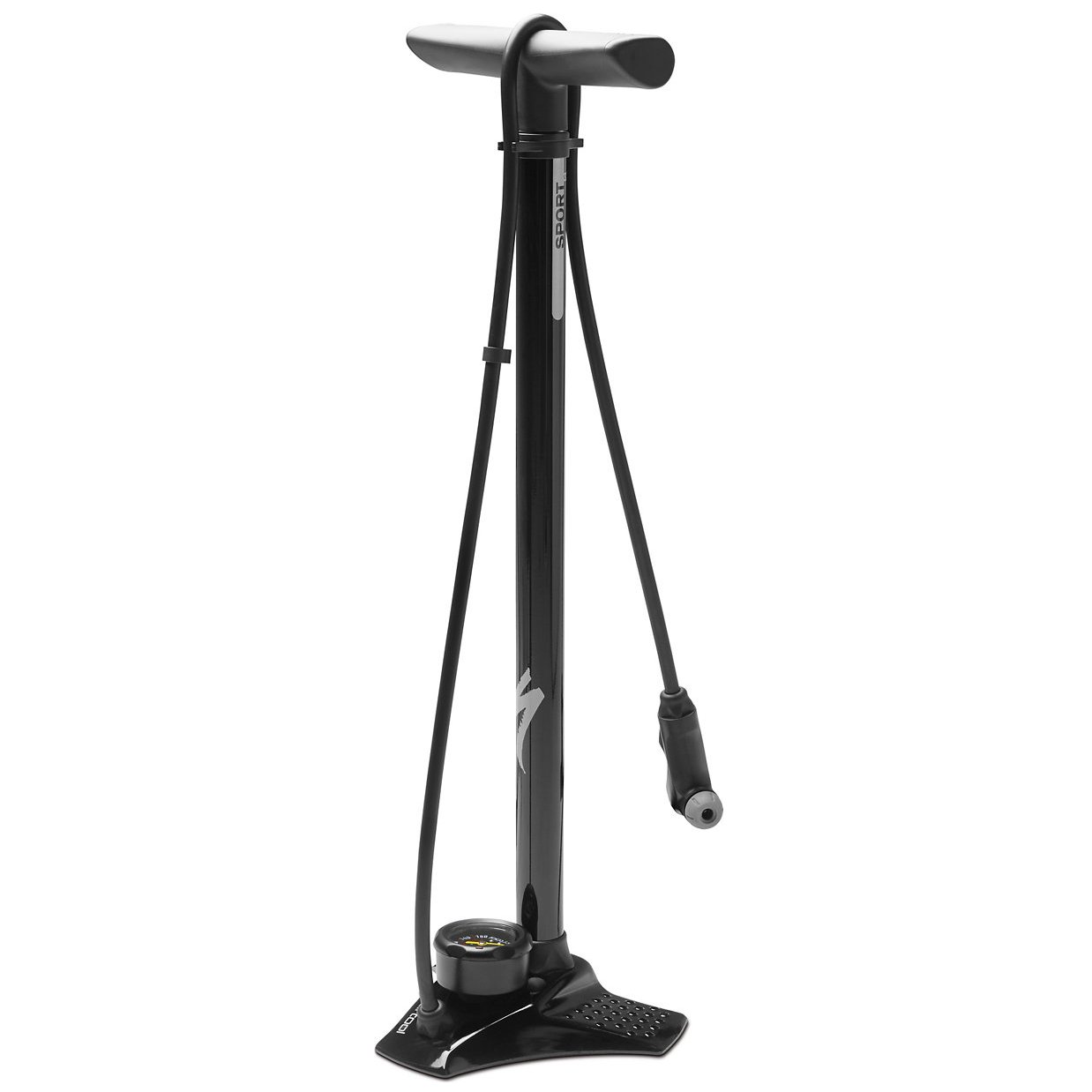
MSRP: $50
- Max Pressure: 160 PSI
- Valve Type(s): Presta, Schrader
The Specialized Air Tool Sport SwitchHitter II floor pump’s name is almost as long as its 42-inch hose. That’s one of the longest on this list, which makes this pump highly practical and easy to use, no matter the setup you have.
The SwitchHitter II also boasts a steel barrel and base for excellent durability, as well as an ergonomic handle that won’t give you blisters after prolonged use.
We also love the large 2-inch gauge and the 160 psi maximum tire pressure. Moreover, the head of the pump has an auto-selecting mechanism, which means it automatically adjusts to Presta and Schrader valves.
If you want a pump that looks good, has a reasonable price, and has excellent reviews, the Specialized Air Tool Sport SwitchHitter II is the one.
4. Lezyne Alloy Floor Drive
Best for All Valve Types

MSRP: $90
- Max Pressure: 220 PSI / 15 Bar
- Valve Type(s): Presta, Schrader, Dunlop
The aluminum Lezyne floor pump has a whopping 220 PSI max pressure, which is more than enough for all bike tires you can imagine, and other applications not related to cycling.
This pump is made with precision CNC machined parts and equipped with an Air Bleed System for easy air tuning. The head is compatible with all three valve types (Presta, Schrader, and Dunlop), so you can use it with your road, mountain, and commuter bikes.
The handles are made from wood, so they feel great in your hands and give the Lezyne Alloy floor pump a timeless look.
5. Foundation Airblast Tubeless
Best Floor Pump for Tubeless Tires

MSRP: $90
- Max Pressure: 260 PSI
- Valve Type(s): Presta, Schrader
The Foundation Airblast is a versatile bike floor pump suitable for all types of valves and tires, including tubeless tires.
Namely, this pump boasts a 260 PSI maximum pressure and a fill-in tank that’s used to quickly seat tubeless tires. This means you don’t need to pump fast and hard like with other floor pumps to get the job done.
On top of that, the Foundation Airblast is compatible with both Presta and Schrader valves and comes with a 2.5″ top-mounted gauge that’s much easier to read compared to the ones mounted at the base.
Finally, the 6063 aluminum barrel and steel base mean this pump is almost indestructible and will probably last you for decades of regular use.
Best Mini Bike Pumps
Whether you own a road, mountain, or city bike, a mini bike pump is an essential accessory every cyclist should own.
Although this type is not as fast and can’t achieve higher pressures, you wouldn’t want to get stranded without one in the middle of nowhere with a flat tire.
Of course, in addition to a mini pump, you also want to carry a patch kit to be able to repair the tube first.
6. Silca Tattico Mini
Best Mini Bike Pump w/ a Hose

MSRP: $70
- Max Pressure: 100 PSI
- Valve Type(s): Presta, Schrader, Dunlop
The Silca Tattico is a dependable and fuss-free mini bike pump suitable for all types of bikes, but best for slim, high-pressure road tires.
It has an inverted design with a hose and valve hidden inside the rear chamber. That means that, once you extend it, you can deliver 10% more air per stroke and you don’t need to get in awkward positions thanks to the hose.
The entire pump is 9.5″ long and weighs around 5.5 ounces, which is perfect if you’re a roadie and you’re trying to carry as little weight as possible. It also comes with a mounting bracket, so you can easily attach it to the bike’s frame.
The maximum pressure you can achieve is 100 PSI, which may not be enough to get to the perfect pressure if you’re a heavy rider, but it’s more than enough for road-side fixes.
7. Topeak Pocket Rocket Mini Pump
Best Budget Mini Pump

MSRP: $30
- Max Pressure: 160 PSI
- Valve Type: Presta, Schrader
The Topeak Pocket Rocket is called that way because it costs just $30, fits in your pocket, but packs a strong punch. It allows pumping to pressures of up to 160 PSI, so it’s ideal for roadies, mountain bikers, commuters, and all other types of riders.
It’s built with a sleek machined aluminum barrel that’s durable and lightweight and comes with a handy mount that lets you carry it on your frame. However, you can also easily fit it in your jersey pocket as it’s only 8.7″ long and weighs just 4.1 ounces.
The Topeak Pocket Rocket also has an integrated seal and dust cap that keep the pump head clean, which is especially useful for mountain bikers who ride muddy trails.
This makes it one of the best mini pumps for riders on a budget.
8. Lezyne Grip Drive Hand Pump
Best Hand Pump for Mountain Bikers
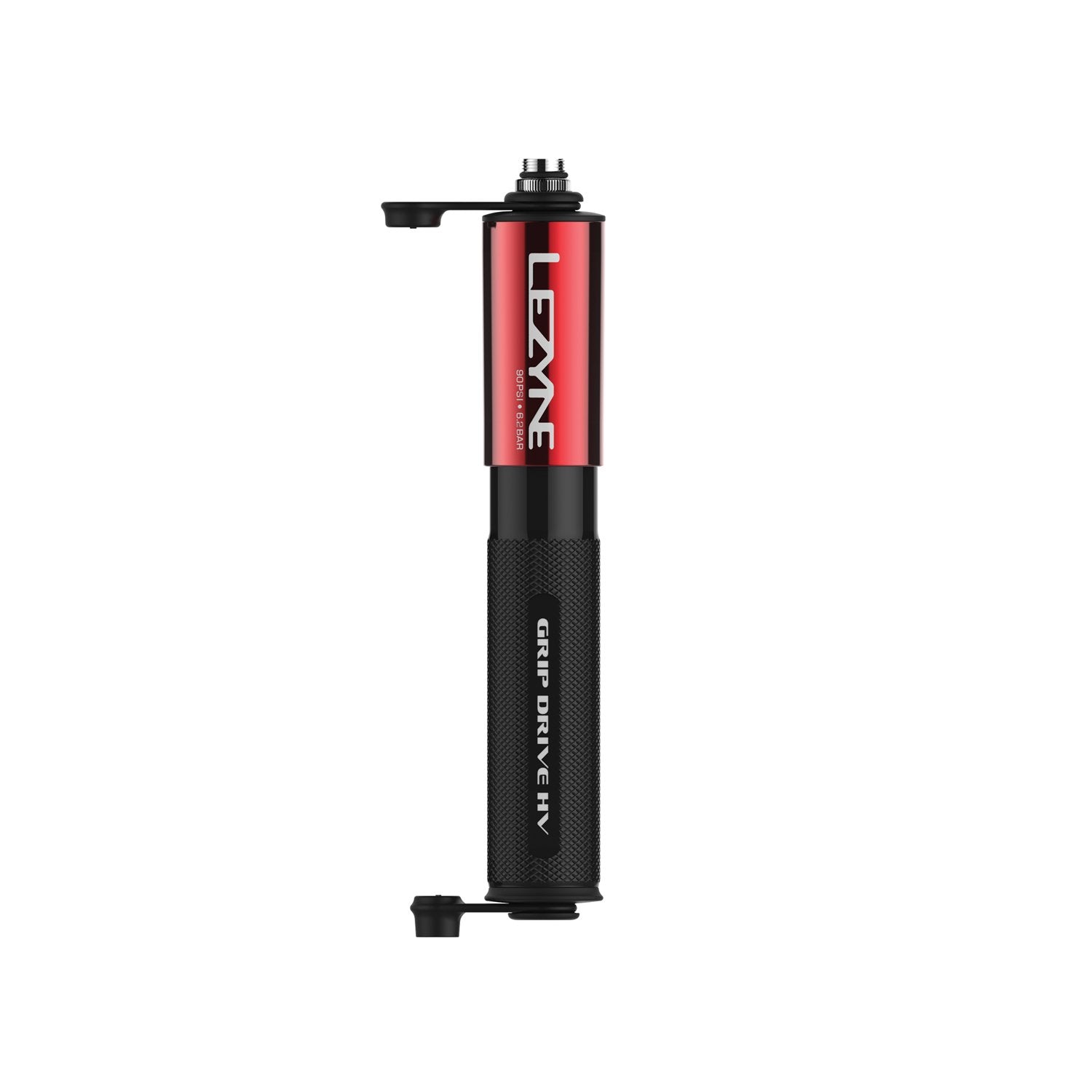
MSRP: $35
- Max Pressure: 90 PSI
- Valve Type(s): Presta, Schrader
The Lezyne Grip Drive is a heavy-duty hand pump made from machined aluminum that can keep your mountain bike tires inflated and take a beating. Of course, you can also use it if you are a roadie, but with a 90 PSI maximum tire pressure, it may not be suitable for everyone.
The Lezyne Grip Drive also features an integrated ABS Flex Hose that’s presta and shrader valve compatible, so you can easily find a comfortable position to inflate your tire.
We also like the lightweight Composite Matrix frame mount that let’s you mount the pump to your frame, though you can also carry it in your pocket.
9. Crank Brothers Gem Mini Pump
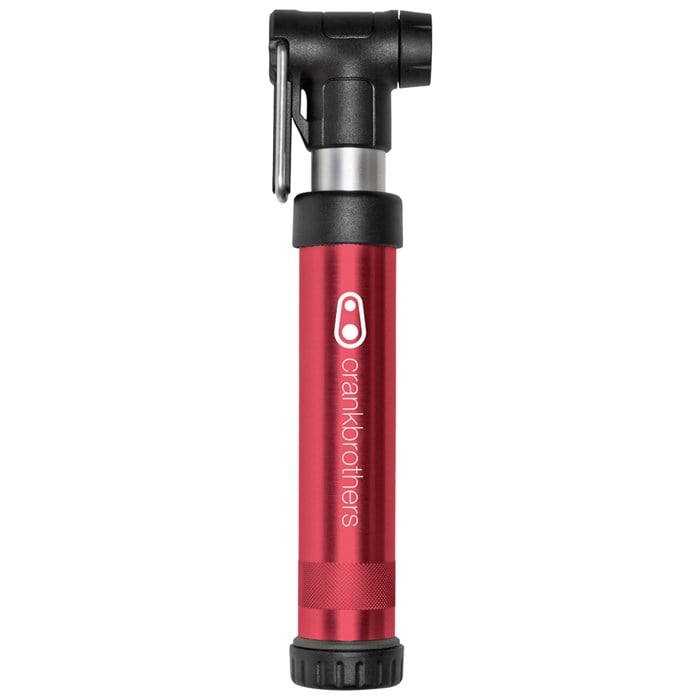
MSRP: $25
- Max Pressure: 100+ PSI
- Valve Type(s): Presta, Schrader
If you want a less expensive mini bike pump that looks good and is made to be durable, the Crank Brothers Gem is a real gem available for just $25.
It’s available in two sizes, short (176mm) and long (205mm) and can inflate your tires to 100+ PSI. That makes it a good choice no matter what type of bike you are riding.
On top of that, the Gem hand pump has an air switch that lets you switch between high volume and high pressure modes, so you can make it more suitable for fat tires, MTB tires, and narrow road tires.
Of course, the pump head is compatible with both Presta and Schrader valves and you even get a 5-year warranty if you buy it.
10. OneUp Components EDC
Best Hand Pump for Tubeless Tires
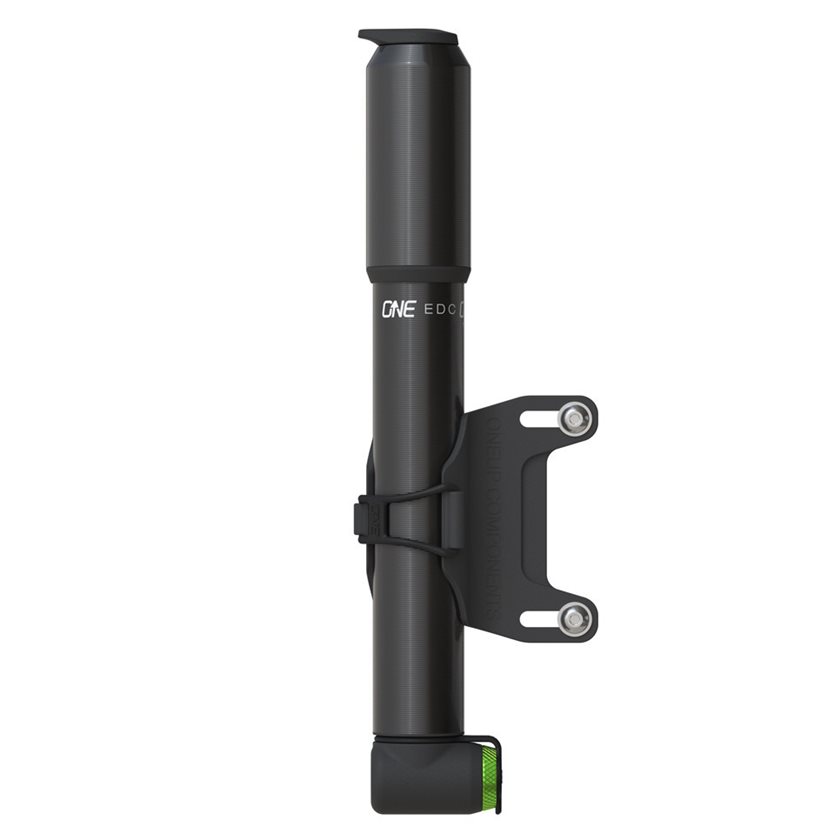
MSRP: $65
- Max Pressure: Not Available
- Valve Type(s): Presta only
This Presta valve pump by OneUp costs pretty much the same as the floor pumps above, but that’s all for a good reason.
This is a high-quality hand pump with fully weatherproof seals and two sizes (70cc, 100cc) to choose from. The OneUp Components EDC is made of aluminum, which makes it durable and lightweight.
However, the best thing about this mini pump is that it holds an EDC Tool and a 20g CO2 cartridge, which makes it suitable for quick fixes and seating tubeless tires on the road.
The only disadvantage is that it’s only compatible with Presta valves, but if you’re riding on tubeless tires, that’s the only valve type you need.
Best CO2 Inflators
11. Bontrager Air Rush Elite CO2 Inflator
Simple and Lightweight CO2 Inflator

- Valve Type(s): Presta and Schrader
- Features: Reusable cartridge insulator; regulator design
The Bontrager Air Rush Elite is a super-simple and compact CO2 inflator that will easily fit in your pocket and save the day when needed.
It’s compatible with Presta and Schrader valves and comes with a regulator design that lets you adjust the rate of inflation.
It does not include a cartridge, so you’ll have to buy one separately, but it does come with a reusable cartridge insulator that will protect your hands when inflating the tires.
Get it if you want an affordable and simple product that gets the job done.
12. Bikesmart Masterflate CO2
Most Streamlined Design
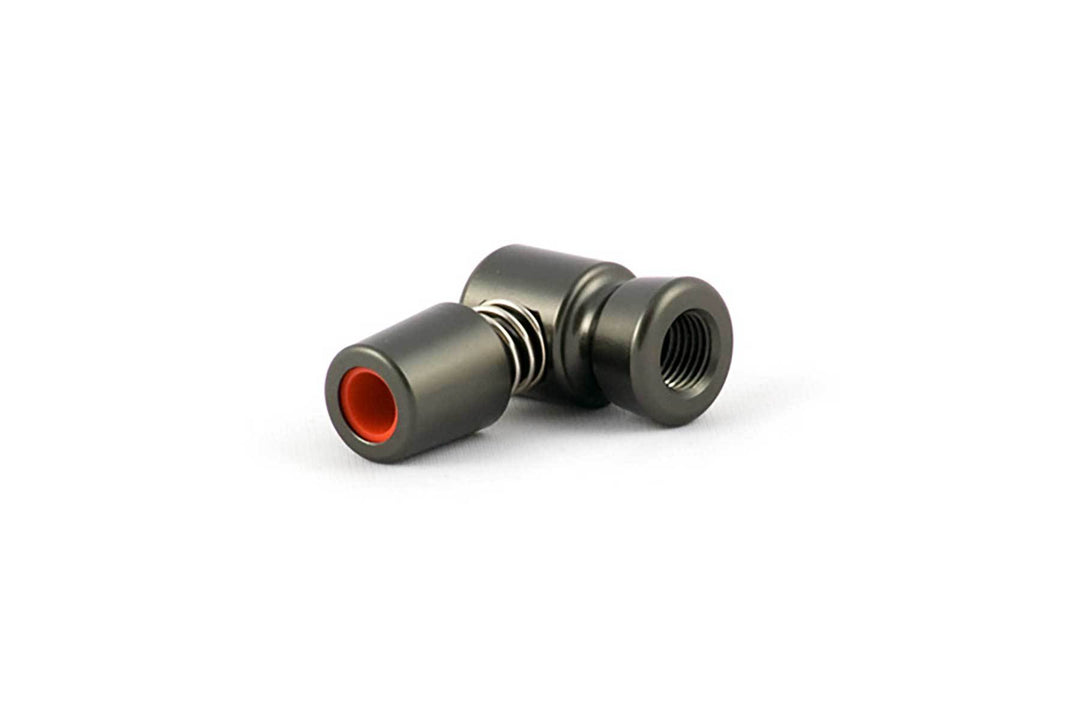
- Valve Type(s): Presta
- Features: Compact, lightweight
The Bikesmart Masterflate is the most compact CO2 inflator on this list. So, if your goal is to carry as little weight on your rides as possible, this is the right choice.
However, due to the streamlined design, this inflator does not have a flow regulator and is only compatible with Presta valves.
We like it because it takes almost no space in your jersey pocket or saddlebag, so you can bring extra cartridges to have just in case.
13. Portland Design Works Barkeep CO2
Best CO2 Inflator w/ a Gauge
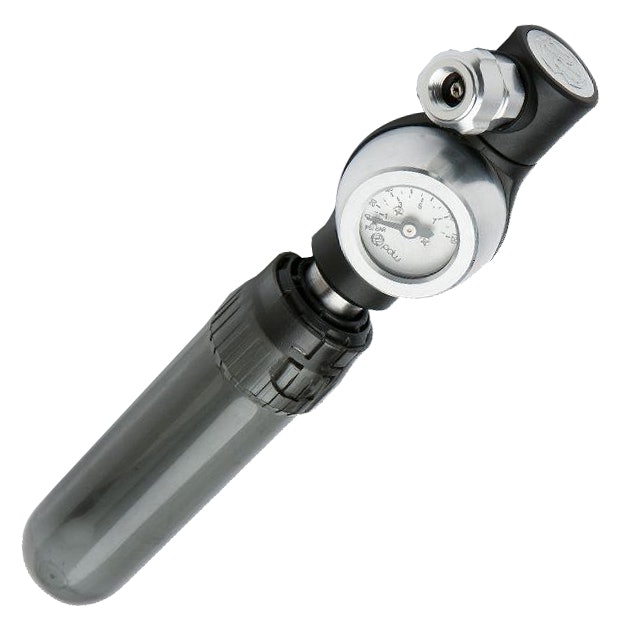
- Valve Type(s): Presta and Schrader
- Features: Integrated pressure gauge; weighs 94g
CO2 inflators are amazing tools when you’re in a pinch and you need to quickly inflate your tire and continue the ride.
However, their biggest disadvantage is that you need to guess your tire pressure and use the unreliable “thumb method.”
Well, you don’t have to do that with the Portland Design Works Barkeep CO2 inflator as it comes with an integrated pressure gauge.
This inflator is compatible with Presta and Schrader valves and weighs 94g, which is a bit heavier than other choices, but worth it if you like the gauge.
14. Lezyne Control Drive CO2
Most Durable Design
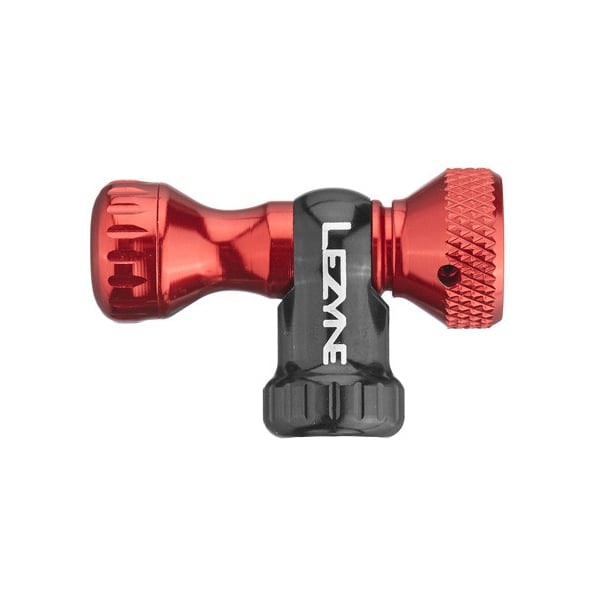
- Valve Type(s): Presta and Schrader
- Features: Control knob; four colors; weighs 24g
If you’re looking for a CO2 inflator that gets the job done, looks good, and will probably last you for decades, we recommend the Lezyne Control Drive CO2.
This inflator is made from CNC-machined aluminum parts and features brass internals, so it is guaranteed to be durable. Despite that, it weighs just 24g.
The Lezyne Control Drive also boasts a precise control knob, a neoprene sleeve for cartridge insulation, and is compatible with both Presta and Schrader valves.
15. Portland Design Works Fatty Object CO2 Inflator
CO2 Inflator w/ Cartridge Included

- Valve Type(s): Presta and Schrader
- Features: Control knob; cartridge included
A CO2 inflator is worth nothing without a cartridge, so it’s good that the Portland Design Works Fatty Object CO2 Inflator comes with one when you buy it.
The inflator itself is made from precision-machined alloy that is pretty much indestructible and has a control know that lets you regulate the flow.
The inflator is compatible with Presta and Schrader valves and has a foam insulator sleeve to protect your fingers from the freezing cartridge.
How to Choose a Bike Pump
New cyclists rarely give bike pumps the requisite consideration; after all, don’t they all do the same thing?
As every experienced cyclist knows, not all pumps are made equal; there are several different kinds to consider.
The prepared cyclist should have two pumps: a small one to take on rides and a large one for use at home. The portable pump is suitable for re-inflating after a puncture; the floor pump is for quick, easy, and accurate inflation to a specific PSI before riding.
This guide will explain the different tire valves, pumps, and pump heads. We’ll also discuss tubeless tire considerations and important features to look for when you’re choosing.
The Different Pump Valves and Their Strengths and Weaknesses
There are three types of tire valves, two of which are used on bikes in the United States. Presta and Schrader valves are the two most common types, whereas the third, which we won’t cover in this article, is called a Woods or Dunlop valve.
Each type has slightly distinct usages and strengths.
Schrader Valve
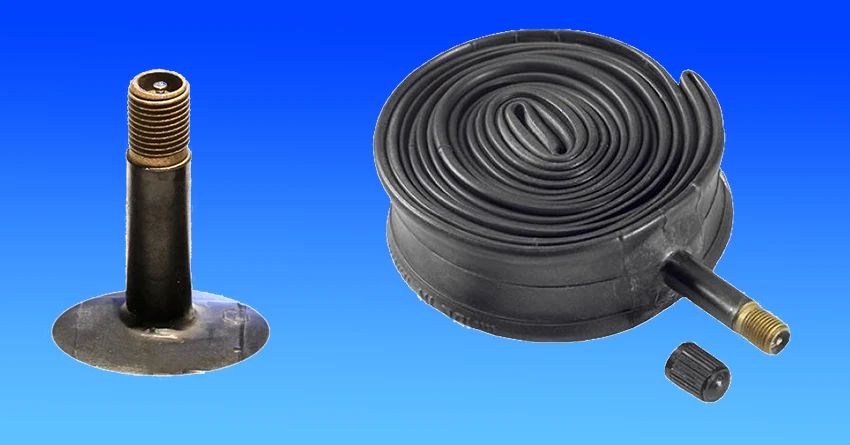
The Schrader valve was invented in 1891 by August Schrader. These are ubiquitous on cars and also common on bikes, especially city and commuter models.
Schrader valve stems are short and wide with thread on the outside. Inside is a small threaded core that controls the flow of air. This stays closed using a spring. When you push the pin on the valve core down, the spring compresses, and air can flow in or out.
This design is the most durable and easy to use. However, the width means a bigger hole is needed in the rim, reducing rim strength. They’re also heavier than Presta valves, and the short stem isn’t compatible with deep rims.
Presta Valve
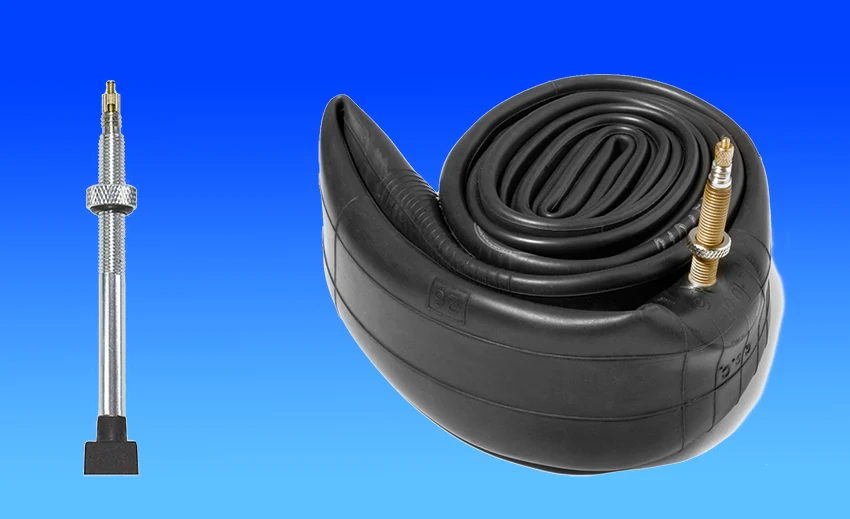
Etienne Sclaverand invented Presta (French) valves around the turn of the 20th century. These are more common on modern bikes, especially those that use 700c wheels, such as best road bikes and best gravel bikes.
The valve itself is tall and skinny, with a threaded outer stem. The core screws into the stem and has a closure nut on top. This nut opens by twisting counterclockwise. When open (raised), the pin on the stem can be depressed, allowing air to flow in and out. To close it fully, you must lower the nut again by turning it clockwise.
These valves require smaller rim holes, increasing rim strength. They’re also lighter, less likely to get clogged, available in multiple lengths, and they make it easy to let air out. However, they’re also more fragile and prone to bending or breaking while inflating.
Tubeless Valves
Tubeless valves aren’t attached to an inner tube. They have the same upper structure as regular valves (Schrader or Presta), only with a rubber bottom that plugs the hole in the rim, creating an airtight chamber. These valves require tubeless-compatible rims.
Types of Bike Pumps
Now that you understand the different valves, you’ll know which pumps are compatible. Thankfully, most pump heads are compatible with both Schrader and Presta.
But what are the different types of pumps?
Floor (Track) Pump
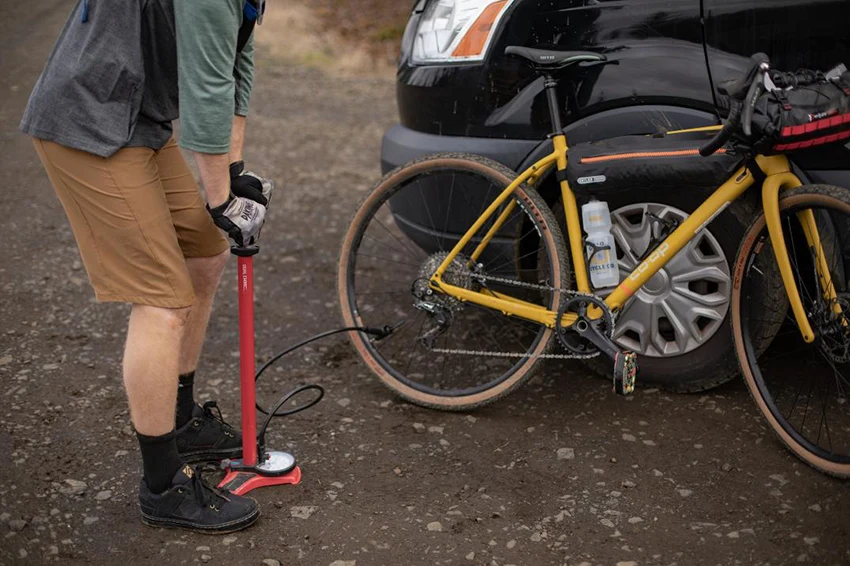
Floor pumps are the best for regular use at home. The large chamber, long plunger, and wide base to stand on make it easy to pump a high air volume and generate greater force. Floor pumps also have pressure gauges for inflating to the desired PSI. This design makes inflating tires faster, easier, and more accurate.
The hose on a track pump is usually long and flexible, meaning you can position the bike and pump as you like. Almost all track pumps are compatible with both Presta and Schrader valves. Ideally, you want a floor pump with a wide, stable base that’s easy to stand on and hold in place while you pump.
Mini (Hand) and Frame Pump
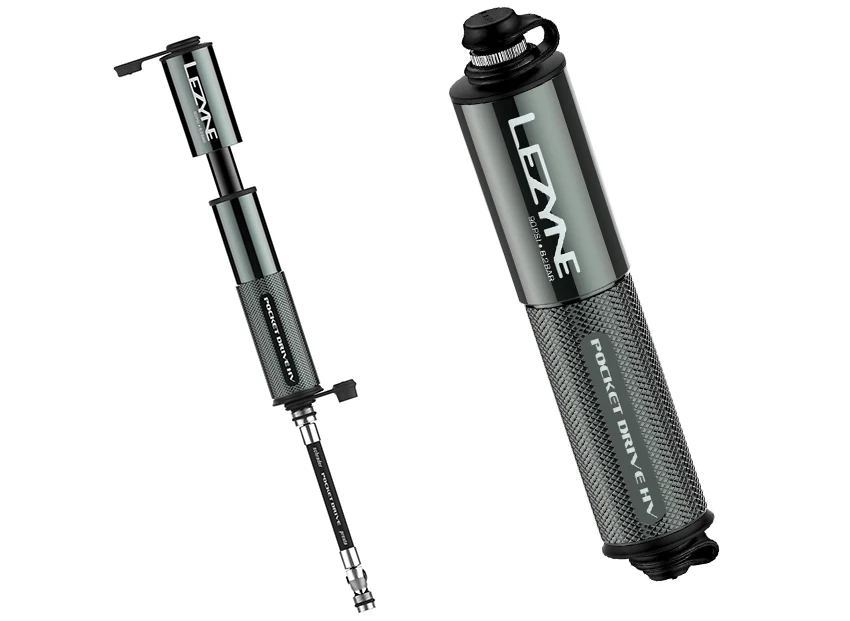
Hand pumps are lightweight and compact for taking along on rides. These pumps vary in size from ones that fit neatly in your jersey pocket (mini) to longer ones (frame) that require mounting to the frame. Most hand pumps come with a mount to clip, but many riders carry them in their pocket.
The attachment method varies, some having a small hose that screws onto the valve, but most clip directly onto the valve and seal with a small locking lever. Most don’t have pressure gauges.
Inflating your tires from empty with a mini bike tire pump is quite laborious, taking several dozen strokes to get the appropriate PSI. The smaller the pump and chamber, the less air it delivers per stroke. However, ‘dual-action’ hand pumps work faster by inflating on both parts of the stroke.
When choosing a portable bike pump, it’s important to choose one that can fill the bike to the desired PSI. If you have tires that are 23mm and 26mm wide, you’ll need a pump that can reach 100 PSI.
Tubeless Pump
The best pump for a bicycle with tubeless tires is one with an air compressor. Tubeless tires require a fast influx of pressurized air to seat the tire bead correctly each time.
These pumps have a secondary canister you charge with air before releasing it in one highly pressurized dump. If you use tubeless tires, consider buying a floor pump with this design.
CO2 Inflator
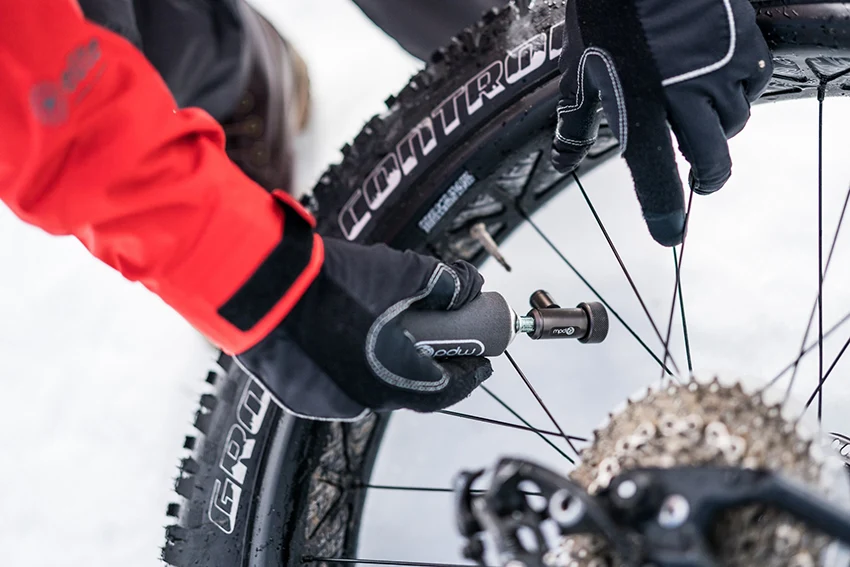
CO2 inflators use pressurized gas to rapidly inflate your tires without requiring a bicycle pump. The canisters come in multiple sizes for different tire volumes. A 16g canister will fill a 25mm road tire to roughly 90 PSI, whereas 20g and 25g canisters are for higher-volume tires.
To use an inflator, you must connect the regulator to the tire valve, push or twist the canister into the regulator, and open the regulator to release the gas.
The downside of CO2 inflators is that the gas leaks out of the tires slowly, so you must empty the tire and refill it with your floor pump when you finish your ride. In addition, they are more expensive and best kept for when you’re in a rush.
Electronic Air Compressor
An electric bike pump (not a pump for electric bikes) is a rechargeable unit that automatically inflates your tires to the desired pressure. These are portable but quite heavy, so most riders wouldn’t carry one while riding.
High-Pressure vs. High-Volume Bike Pump
In addition to understanding the different styles of bike pumps, you should also know the difference between high-volume and high-pressure pumps.
High-volume tires (MTB, fat bike, and some hybrids) that require lower PSIs (20 to 60) are best served by a high-volume pump. These have larger chambers that deliver more air per stroke for faster inflation. However, they cannot achieve the required pressure to inflate a tire to road bike PSI (80 to 120).
A high-pressure pump for bicycle tires doesn’t deliver as much air volume per stroke, but the narrow chamber allows you to pressurize the air and inflate up to 160 PSI or higher. These are more common because they can be used with high-volume or high-pressure tires (such as a road bike tire).
Some high-end floor pumps can switch between high-volume and high-pressure settings with the flick of a lever.
Bicycle Pump Heads: Which to Choose?
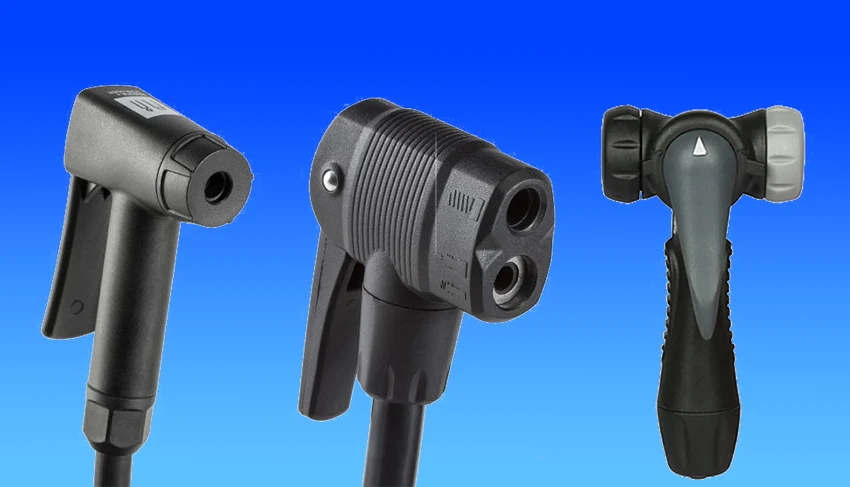
The pump head (also known as air chuck) plays a big role in user-friendliness. Awkward, poorly designed heads lead to lost air when connecting and disconnecting or to damaged Presta valves.
Many cyclists want to use their bike tire pump on both Presta and Schrader valves, and most brands offer this dual valve compatibility. However, the design differs.
There are three types of pump heads you’ll encounter:
- Reversible – These heads are only set to one side at a time and often require an unnecessarily complicated process to change between a Schrader and Presta valve pump.
- Universal/Auto-select – These ‘smart’ heads have one hole that accepts both valve types. When they work, they’re great, but if they’re not designed well, they can be fidgety.
- Dual – These have a connection for both of the main valves on the same head, either side by side or on opposite sides. This is the most reliable type but requires a larger pump head.
If your pump supports only one valve type, you can get Presta-to-Schrader or Schrader-to-presta adapters that let you inflate both types.
Ease of Use
In our opinion, the quality of a bicycle tire pump is largely determined by how easy it is to connect to the valve. Again, a poor design will release air and potentially damage the valve when connecting and disconnecting.
Screw-on pump heads create the most secure seal, but they take longer to use than a press-on head with a tab that flips to seal the chamber. The issue with the press-on design is that it’s more likely to be fidgety and release air accidentally.
Features to Look Out for on a Pump
In general, the more you spend, the more features you get and the more user-friendly and robust the product is. However, some simple, less expensive pumps work better than expensive, overly complicated ones.
So, what should you look for when buying a pump?
Easy Attachment
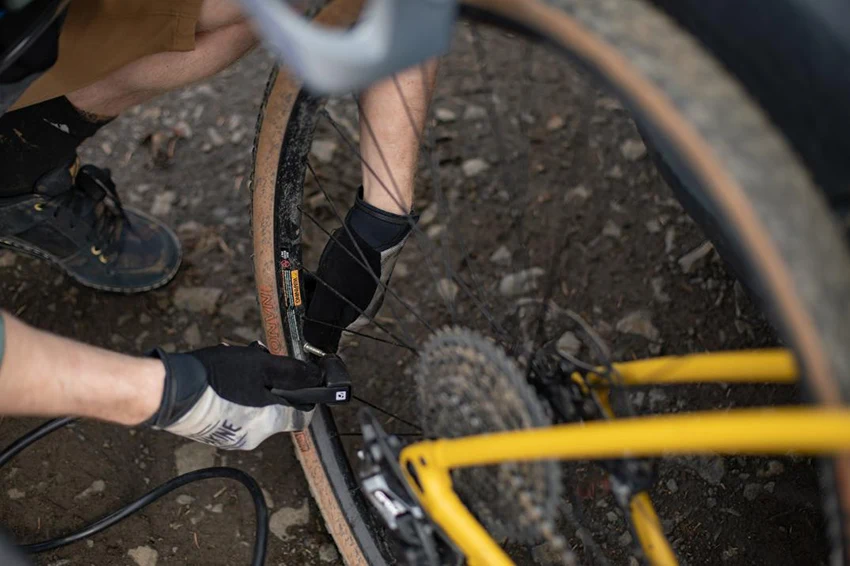
As mentioned, ease of attachment is one of the most important characteristics of a pump, if not the most important. It should allow a fast, secure connection to the valve, avoiding damage to the valve and releasing air when connecting and disconnecting. If possible, avoid reversible pump heads that require switching parts around to swap between valve types.
Written or video tests and buyer reviews are great ways to determine if a pump head is user-friendly. Otherwise, you can test them in your local bike shops.
Inflation Speed
While not of major importance for floor pumps, there is a big difference in inflation speed between different mini bike pumps. Some have ‘dual-action’ inflation that increases speed and reduces effort, getting you back on the road quicker after repairing a flat. The quality and ease of connection are also important factors.
Stability
The stability of a floor pump isn’t an obvious thing to look out for until you own one that topples over at the slightest touch. The height, weight distribution, and base shape and size determine a track pump’s stability.
Ideally, you want a tripod base over a two-sided one. Additionally, you want the base feet to be spread wide and offer plenty of room for your feet to rest while you pump.
A tall pump with a heavy hose and poor base will likely fall over easily, causing damage and annoyance.
Pressure Guage
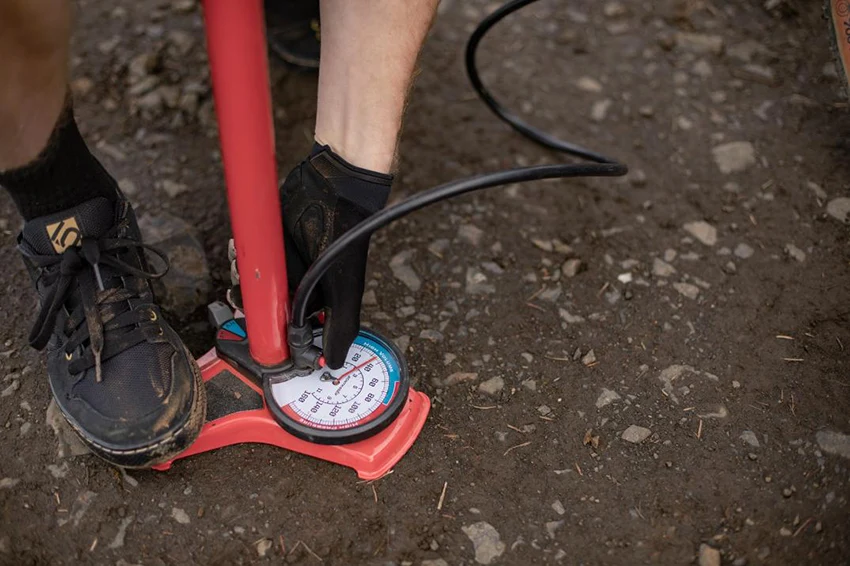
At a minimum, you want a pressure gauge on one of your bike pumps. Most mini bike pumps don’t have them, but some higher-end options do. Any good track pump has a pressure gauge, but the best ones are easy to read, accurate, and positioned well.
Gauge accuracy is important if you run specific PSIs. Most pump gauges aren’t fully accurate (they may be off by a few PSI), but some are better than others. We recommend buying a hand-held pressure gauge if you want the most accurate reading.
The display size, markings, and position also affect how easy it is to read. Some displays are positioned at the base and have small numbers, making them hard to read while pumping. The best gauges have big numbers and are positioned higher up (although this can make the bike pump unsteady).
Hose
A long, flexible hose makes floor pumps easy to use, as you can position the pump and valve wherever you like. Some hoses are unnecessarily short, but most are adequate.
Again, a hand pump with a hose can take longer to connect but typically creates a more secure seal and doesn’t lose air when connecting and disconnecting.
Durability
The durability of a pump isn’t a huge consideration for most of us, who generally leave it in one place and use it once or twice a week (or less). However, the best bike pumps will typically have more metal in their construction to increase durability. Metal also flexes less, meaning the pump is sturdier while pumping.
A cheap plastic pump can break easily, even with light use. The sealing tab on the pump head is a likely culprit if it’s made of plastic. Some brands offer replacement parts, such as hoses, pump heads, or handles, to repair the pump if it breaks. This is especially important if it’s an expensive pump.



